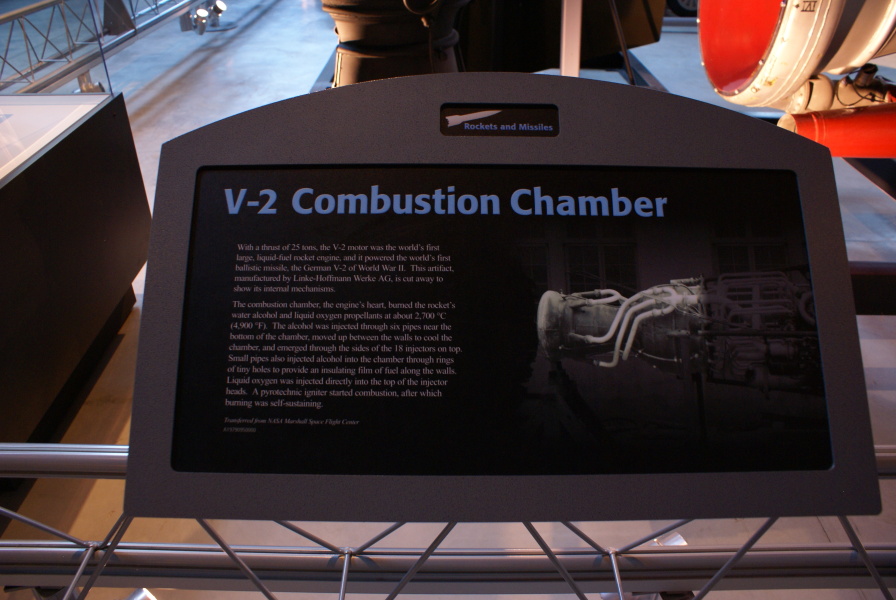| Prev |
heroicrelics.org Udvar-Hazy Center Site Index Cut-Away V-2 Engine Gallery |
Next |
dsc77156.jpg
The sign accompanying the combustion chamber. It reads
V-2 Combustion Chamber
With a thrust of 25 tons, the V-2 motor was the world's first large, liquid-fuel rocket engine, and it powered the world's first ballistic missile, the German V-2 of World War II. This artifact, manufactured by Linke-Hoffmann Werke AG, is cut away to show its internal mechanisms.
The combustion chamber, the engine's heart, burned the rocket's water alcohol and liquid oxygen propellants at about 2,700°C (4,900°F). The alcohol was injected through six pipes near the bottom of the chamber, moved up between the walls to cool the chamber, and emerged through the sides of the 18 injectors on top. Small pipes also injected alcohol into the chamber through rings of tiny holes to provide an insulating film of fuel along the walls. Liquid oxygen was injected directly into the top of the injector heads. A pyrotechnic igniter started combustion, after which burning was self-sustaining.
Transferred from NASA Marshall Space Flight Center
A19790950000

| Time picture taken | Sun Jun 19 14:47:36 2011 |
| Location picture taken |
Ground Level James S. McDonnell Space Hangar Udvar Hazy Center Chantilly, VA |
| Prev |
heroicrelics.org Udvar-Hazy Center Site Index Cut-Away V-2 Engine Gallery |
Next |